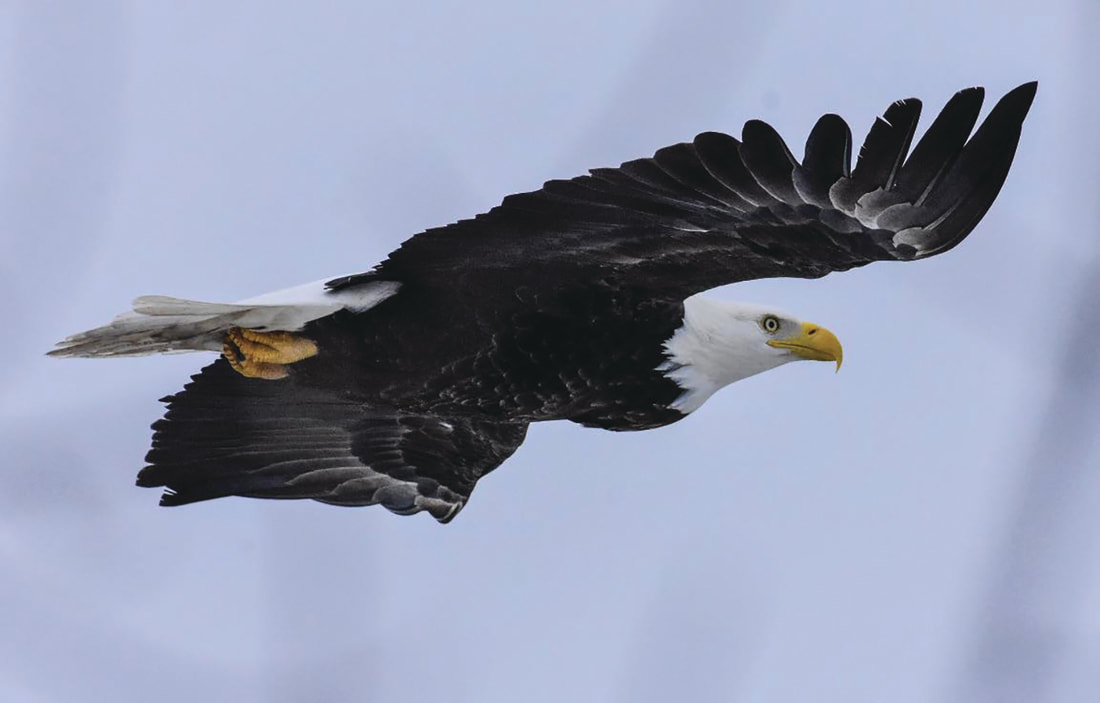|
The Islands and the Northern Lake Champlain region are a bird lover’s paradise, featuring everything from waterfowl to warblers.
But nothing has been exciting as the return of bald eagles which are on track to be removed from the state’s endangered species list. Nationally, bald eagles were one of the first species to be listed as endangered after the eagles were nearly wiped out by the pesticide DDT, hunting and habitat loss. By the 1970’s only a few hundred nesting pairs remained in the country. The situation was even more dire in Vermont, which had not seen a bald eagle since the 1940s. Bald eagles would not return to Vermont for more than 50 years. In the early 2000s, the state received funding to reintroduce the birds to Vermont. More than a dozen were released the Dead Creek Wildlife Management Area in Addison County. At the same time, mated pairs began arriving on their own from neighboring states where they had already been reintroduced. The birds like waterways and settled in the Champlain Valley and Connecticut River Valley initially and are now slowly making their way inward, according to Margaret Fowle, a conservation biologist with Audubon Vermont. In the Islands both locals and visitors are excited by sightings of the majestic birds. Photos of the islands’ resident eagles regularly draw hundreds of likes on The Islander’s Facebook page and dozens of comments. “These are amazing, huge raptors that are incredible when you see them in person,” Fowle said. But the birds aren’t entirely out of the woods. New threats loom on the horizon, including enviornmental pollutants like lead and polychlorinated biphenyls, or PCBs. And habitat loss remained a perennial concern for most birds. But there us a bigger threat. “Climate change is the big unknown,” Fowle said. “We don’t know for sure how climate change could affect eagles.” According to the Audubon Society’s Climate Report, as average annual temperatures continue to climb every year, birds’ ranges more generally will be pressed north. Many birds will be forced to adapt to new environments, which the report suggests could be a challenge for some bald eagles. Even in environments where eagles may acclimate, an already well-documented trend in more intense storms could damage eagles’ nesting habitats. Meanwhile, sometimes toxic blooms of cyanobacteria could become increasingly common, threatening fish species making up the bulk of bald eagles’ diets. Still, according to Fowle, bald eagles’ successful return to Vermont after a decades’ long absence from the Green Mountain State was a fact worth celebrating. “It’s a big accomplishment and worth celebrating, for sure,” Fowle said. “It’s not easy to recover a species.”
1 Comment
|
|
